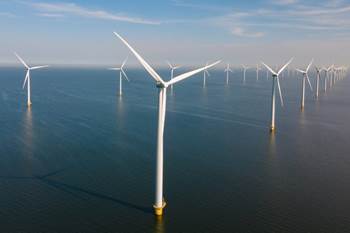Search Results
Showing 61 – 70 of 2863 results
Filament winding is a specialized technique used in composite manufacturing, involving the precise and automated winding of continuous fibers onto a rotating mandrel or mold. This method allows for the creation of strong and seamless structures, optimizing the alignment and orientation of the fibers to meet specific design requirements. Filament winding is employed in producing cylindrical or conical composite parts, such as pipes, pressure vessels, and aerospace components, enabling engineers to tailor the strength, stiffness, and performance characteristics of the final product.
Processes in composites manufacturing encompass a diverse array of techniques employed to fabricate composite materials. These processes include methods like hand layup, where layers of resin and reinforcement materials are manually placed, and vacuum infusion, where a vacuum draws resin into a preform. Other techniques like compression molding, filament winding, and automated methods such as 3D printing are utilized to create intricate and specialized composite structures. Each process offers unique advantages in terms of precision, scalability, and efficiency, catering to diverse industry needs. As technology advances, newer methods are emerging, promising faster production cycles, reduced waste, and increased customization, driving the evolution of composite manufacturing towards more sophisticated and versatile methodologies.
The wind energy market has long been considered the world’s largest market, by volume, for glass fiber-reinforced polymer (GFRP) composites — and increasingly, carbon fiber composites — as larger turbines and longer wind blades are developed, requiring higher performance, lighter weight materials. The outer skins of wind and tidal turbine blades generally comprise infused, GFRP laminates sandwiching foam core. Inside the blade, rib-like shear webs bonded to spar caps reinforce the structure. Spar caps are often made from GFRP or, as blade lengths lengthen, pultruded carbon fiber for additional strength.
In collaboration with Ventum Dynamics, the purpose-built VX175 turbine will bring customers reduced weight, greater structural integrity and the ability to recycle at end of life.
JEC World 2025: Aimen Technology Centre highlights its work in composites R&D through the presence of the Carbon4Power blade and its role in the aerospace-focused CAELESTIS project.
JEC World 2025: Engineering Technology Corp. (ETC) is exhibiting everything from its filament winders portfolio to a new winder control system, emphasizing range, adapatability and high production quality.
Event featured insights from project partners regarding novel materials testing, addressing technical challenges and the path to certification to better understand AWE systems and their potential.
Technical viability of the composite wind-assisted propulsion technology has been verified, aids OceanWing’s expansion into current and new markets.
Avangrid recently donated 300 pounds of decommissioned wind turbine blades to test startup solution that recovers more than 90% of turbine blade material.
Madrid-based international company is focused on the joint procurement process for offshore wind in Connecticut, Rhode Island and Massachusetts.
Physics-informed machine learning algorithms will be applied to simulate and optimize composite wind blade curing in an effort to advance smart composites manufacturing in industry.
The three-year project, led by composites industry partners and research institutes, announced breakthrough progress in finding cost-effective recycling paths for decommissioned blades.
Numerous sources indicate that Siemens Gamesa may be making headway with a previously noted 21-MW wind turbine with a 276-meter rotor which would put it ahead of competitors.










